Historically, textbooks have taught that incompatibility between northern and southern economies caused the Civil War. The industrial revolution in the North, during the first few decades of the 19th century, brought about a machine age economy that relied on wage laborers, not slaves. At the same time, the warmer Southern states continued to rely on slaves for their farming economy and cotton production. Southerners made huge profits from cotton and slaves and fought a war to maintain them. Northerners did not need slaves for their economy and fought a war to free them. Everything else, many textbooks claim, was tied to that economic difference and was anchored by cotton. The agricultural economy was certainly one cause of the Civil War, but not the only one. Wars are never simple and neither are their causes. Many other factors that helped bring about the war are central to understanding America's past. So what did start the Civil War—a war that divided the nation, destroyed crops, cities, and railroad lines, and claimed 630,000 lives? Many factors plunged the nation into chaos in 1861. Key political causes include the slow collapse of the Whig Party, the founding of the Republican Party, and, most important, the 1860 election of Abraham Lincoln as president. Religious opposition to slavery increased, supported by ministers and abolitionists such as William Lloyd Garrison. Geographical conflict over the spread of slavery into western territories and states—areas with neither an industrial nor a farm economy—grew. And political deals, such as the Missouri Compromise in 1820 and Compromise of 1850, and Supreme Court rulings, such as the Dred Scott decision in 1857, divided the country even more. These divisions went far beyond cotton and economics.
Urban vs. Rural, Factory vs. Farm
The central story told in textbooks is that the industrial revolution, beginning with the first textile mill in New England in the 1790s, created an economy that did not need slaves. Southerners, however, continued to use slave labor on their farms because agriculture was profitable. Closely related to this change, cities rose as population centers in the North created an urban society while the South remained primarily agrarian. Census data on farms and cities, however, reveals that while cities grew rapidly in the North between 1800 and 1860, they did not become leading population centers until 1920, 60 years after the Civil War began.
Census data on farms and cities, however, reveals that while cities grew rapidly in the North between 1800 and 1860, they did not become leading population centers until 1920, 60 years after the Civil War began.  In 1860, there were more farms in the North than in the South, although Southern states, especially in the Cotton Belt, had the majority of large farms (1,000 acres or more).
In 1860, there were more farms in the North than in the South, although Southern states, especially in the Cotton Belt, had the majority of large farms (1,000 acres or more).
Census data on farms and cities, however, reveals that while cities grew rapidly in the North between 1800 and 1860, they did not become leading population centers until 1920, 60 years after the Civil War began.
The notion that there were no southern cities was also a myth. The U.S. had eight cities with more than 150,000 residents in 1860 and three of them—St. Louis, Baltimore and New Orleans—were in slave states. Several other southern cities, such as Louisville, Mobile, and Charleston, had more than 20,000 residents each and were listed among the largest urban places in the U.S. Similarly, data demonstrate the presence of manufacturing in the South. Richmond, VA, had mills and factories as early as 1800. The 1860 census shows the fairly even spread of manufacturing across the states, with only New York and Pennsylvania recording 17,000 or more manufacturing establishments (see Primary Source Farms Census Data [1860], List of Urban Areas [1860], and Manufacturing Census Date [1860]).
Cotton and Slavery
"Cotton is King!" bellowed James Hammond, a U.S. Senator from South Carolina, in 1859, reminding all of the importance of cotton in the South. A major error in the agricultural vs. industrial revolution theme, however, stated in book after book, is that slavery existed to produce cotton. When I ask college students to talk about the causes of the war, many tell the story of Eli Whitney and the cotton gin. They remind me that there were no factories in the South prior to 1860 and are astonished when I tell them that factories flourished in the South as early as John Adams's Presidency. They gloat over the North's shipping yards and are surprised to learn of the busy shipping industry based in cities such as Richmond, Charleston, and New Orleans. Their jaws drop when I talk about the thousands of slaves in the South who worked in busy cities, not on quiet plantations. Slaves did not arrive in the U.S. in the early 1800s to work on cotton plantations. They began to arrive in the early 1600s to work on farms that grew a number of different crops. Sugar and tobacco became the most profitable to meet European demands for crops that did not grow in the colder European climate. Virginia planters made a fortune growing tobacco, making tobacco the first King. Cotton succeeded tobacco on the throne much later. By 1860, however, Alabama, Mississippi, and Louisiana replaced Georgia and South Carolina as leading growers of cotton (see Primary Source Cotton and Slaves Data [1860]).
When I ask college students to talk about the causes of the war, many tell the story of Eli Whitney and the cotton gin. They remind me that there were no factories in the South prior to 1860 and are astonished when I tell them that factories flourished in the South as early as John Adams's Presidency. They gloat over the North's shipping yards and are surprised to learn of the busy shipping industry based in cities such as Richmond, Charleston, and New Orleans. Their jaws drop when I talk about the thousands of slaves in the South who worked in busy cities, not on quiet plantations. Slaves did not arrive in the U.S. in the early 1800s to work on cotton plantations. They began to arrive in the early 1600s to work on farms that grew a number of different crops. Sugar and tobacco became the most profitable to meet European demands for crops that did not grow in the colder European climate. Virginia planters made a fortune growing tobacco, making tobacco the first King. Cotton succeeded tobacco on the throne much later. By 1860, however, Alabama, Mississippi, and Louisiana replaced Georgia and South Carolina as leading growers of cotton (see Primary Source Cotton and Slaves Data [1860]).
[Students'] jaws drop when I talk about the thousands of slaves in the South who worked in busy cities, not on quiet plantations.
If farming was so important, why did southerners rush to enslave the colder Kansas and Nebraska territories that remained snow covered in winter months? In these areas, representing only one third of the United States, only 130 slaves lived. Why were southerners eager to bring territories such as New Mexico, Texas, and California—where very little cotton was grown—into the Union as slave states? There were many reasons completely unrelated to cotton.  Pro-slavery advocates in California, for example, wanted slaves to prospect for gold and build gold and silver mines. And if slavery was so central to the southern economy of farming, why did only one fourth of southerners own slaves? Why were so many prominent southerners, such as George Washington, George Wythe, and Thomas Jefferson, opposed, at least in theory, to the institution? Slavery, too, was seen as a moral evil by the hundreds of thousands of northern abolitionists who published newspapers and marched in the streets of small towns and large cities carrying their colorful banners. Abraham Lincoln did not target farming and cotton in his arguments against slavery; he used morality. He told one audience in Chicago in 1859 that, "I think slavery is wrong, morally and politically." Lincoln told another audience that America could not be seen "fostering human slavery and proclaiming ourselves, at the same time, the sole friends of human freedom." And, of course, in his fabled "House Divided" speech he predicted that the United States would be either all slave or all free.
Pro-slavery advocates in California, for example, wanted slaves to prospect for gold and build gold and silver mines. And if slavery was so central to the southern economy of farming, why did only one fourth of southerners own slaves? Why were so many prominent southerners, such as George Washington, George Wythe, and Thomas Jefferson, opposed, at least in theory, to the institution? Slavery, too, was seen as a moral evil by the hundreds of thousands of northern abolitionists who published newspapers and marched in the streets of small towns and large cities carrying their colorful banners. Abraham Lincoln did not target farming and cotton in his arguments against slavery; he used morality. He told one audience in Chicago in 1859 that, "I think slavery is wrong, morally and politically." Lincoln told another audience that America could not be seen "fostering human slavery and proclaiming ourselves, at the same time, the sole friends of human freedom." And, of course, in his fabled "House Divided" speech he predicted that the United States would be either all slave or all free.
Political Causes
Turbulent politics also led to the war. Following the compromise of 1850, legal, political, and physical battles raged over whether or not to admit Kansas as a slave state, a state with no cotton. Many students believe that the Republican Party, created in 1855, focused on slavery in the 1860 campaign, but their key issues centered on political corruption of the Buchanan Administration. The Republican platform called for containment, not the end of slavery. Lincoln's election, however, proved to be the icing on the southern secession cake. Only a minority of southern newspapers favored leaving the union prior to Lincoln's election; most supported secession after.
The notion that slave labor for cotton fields caused the Civil War has been reinforced by textbooks and fictional narratives for more than a century. Historians, however, argue for a more nuanced, complex understanding.
Other factors leading to war include John Brown's raid on Harper's Ferry in 1859, raucous battles over the Fugitive Slave Act, and President Buchanan's refusal to arbitrate between North and South, all connected to the increasingly bitter debate over slavery. In addition, northern newspapers campaigned against states' rights, southerners resented new taxes, and the Fort Sumter crisis turned into a pivotal moment (see Primary Source Editorials [1860-1861]).
Conclusion
The notion that slave labor for cotton fields caused the Civil War has been reinforced by textbooks and fictional narratives for more than a century. Historians, however, argue for a more nuanced, complex understanding. The Civil War was fought for many reasons, not solely or even primarily because of the growing importance of cotton on southern farms. Moving away from economic differences and cotton as simplistic causes leads to a more complex and far more interesting story.


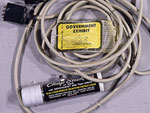

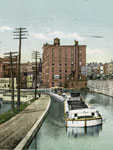
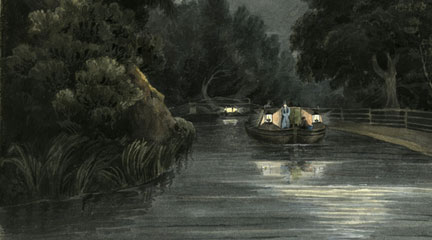
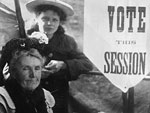
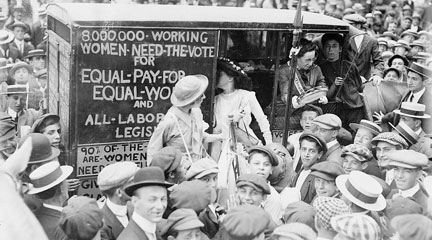
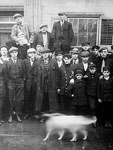



 Census data on farms and cities, however, reveals that while cities grew rapidly in the North between 1800 and 1860, they did not become leading population centers until 1920, 60 years after the Civil War began.
Census data on farms and cities, however, reveals that while cities grew rapidly in the North between 1800 and 1860, they did not become leading population centers until 1920, 60 years after the Civil War began.  In 1860, there were more farms in the North than in the South, although Southern states, especially in the Cotton Belt, had the majority of large farms (1,000 acres or more).
In 1860, there were more farms in the North than in the South, although Southern states, especially in the Cotton Belt, had the majority of large farms (1,000 acres or more). When I ask college students to talk about the causes of the war, many tell the story of Eli Whitney and the cotton gin. They remind me that there were no factories in the South prior to 1860 and are astonished when I tell them that factories flourished in the South as early as John Adams's Presidency. They gloat over the North's shipping yards and are surprised to learn of the busy shipping industry based in cities such as Richmond, Charleston, and New Orleans. Their jaws drop when I talk about the thousands of slaves in the South who worked in busy cities, not on quiet plantations. Slaves did not arrive in the U.S. in the early 1800s to work on cotton plantations. They began to arrive in the early 1600s to work on farms that grew a number of different crops. Sugar and tobacco became the most profitable to meet European demands for crops that did not grow in the colder European climate. Virginia planters made a fortune growing tobacco, making tobacco the first King. Cotton succeeded tobacco on the throne much later. By 1860, however, Alabama, Mississippi, and Louisiana replaced Georgia and South Carolina as leading growers of cotton (see Primary Source Cotton and Slaves Data [1860]).
When I ask college students to talk about the causes of the war, many tell the story of Eli Whitney and the cotton gin. They remind me that there were no factories in the South prior to 1860 and are astonished when I tell them that factories flourished in the South as early as John Adams's Presidency. They gloat over the North's shipping yards and are surprised to learn of the busy shipping industry based in cities such as Richmond, Charleston, and New Orleans. Their jaws drop when I talk about the thousands of slaves in the South who worked in busy cities, not on quiet plantations. Slaves did not arrive in the U.S. in the early 1800s to work on cotton plantations. They began to arrive in the early 1600s to work on farms that grew a number of different crops. Sugar and tobacco became the most profitable to meet European demands for crops that did not grow in the colder European climate. Virginia planters made a fortune growing tobacco, making tobacco the first King. Cotton succeeded tobacco on the throne much later. By 1860, however, Alabama, Mississippi, and Louisiana replaced Georgia and South Carolina as leading growers of cotton (see Primary Source Cotton and Slaves Data [1860]). Pro-slavery advocates in California, for example, wanted slaves to prospect for gold and build gold and silver mines. And if slavery was so central to the southern economy of farming, why did only one fourth of southerners own slaves? Why were so many prominent southerners, such as George Washington, George Wythe, and Thomas Jefferson, opposed, at least in theory, to the institution? Slavery, too, was seen as a moral evil by the hundreds of thousands of northern abolitionists who published newspapers and marched in the streets of small towns and large cities carrying their colorful banners. Abraham Lincoln did not target farming and cotton in his arguments against slavery; he used morality. He told one audience in Chicago in 1859 that, "I think slavery is wrong, morally and politically." Lincoln told another audience that America could not be seen "fostering human slavery and proclaiming ourselves, at the same time, the sole friends of human freedom." And, of course, in his fabled
Pro-slavery advocates in California, for example, wanted slaves to prospect for gold and build gold and silver mines. And if slavery was so central to the southern economy of farming, why did only one fourth of southerners own slaves? Why were so many prominent southerners, such as George Washington, George Wythe, and Thomas Jefferson, opposed, at least in theory, to the institution? Slavery, too, was seen as a moral evil by the hundreds of thousands of northern abolitionists who published newspapers and marched in the streets of small towns and large cities carrying their colorful banners. Abraham Lincoln did not target farming and cotton in his arguments against slavery; he used morality. He told one audience in Chicago in 1859 that, "I think slavery is wrong, morally and politically." Lincoln told another audience that America could not be seen "fostering human slavery and proclaiming ourselves, at the same time, the sole friends of human freedom." And, of course, in his fabled 



